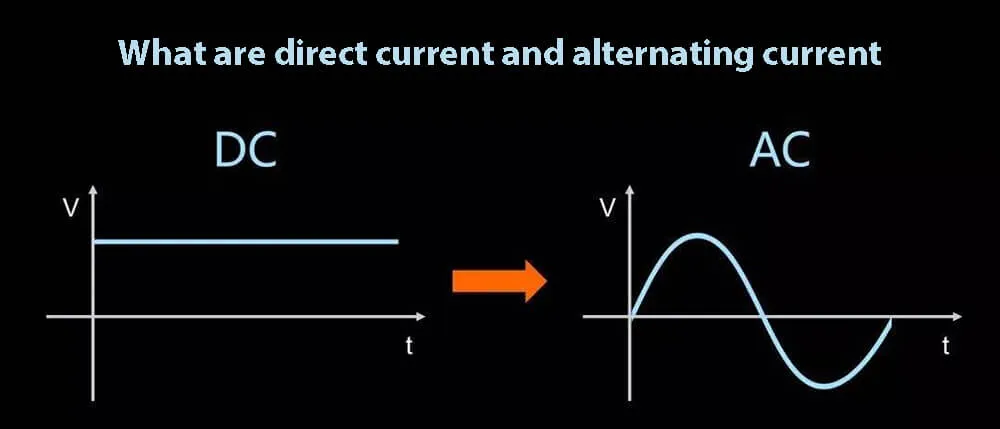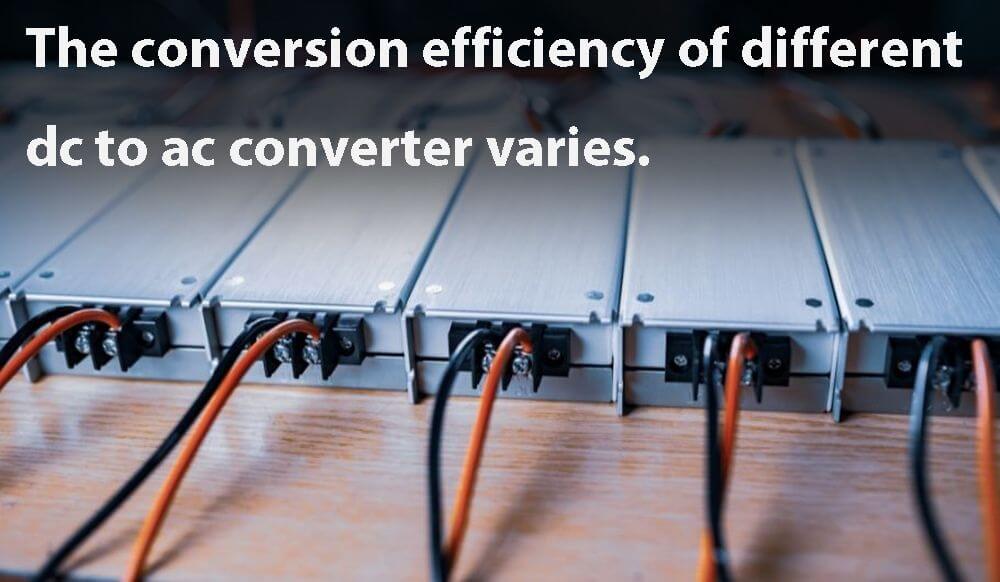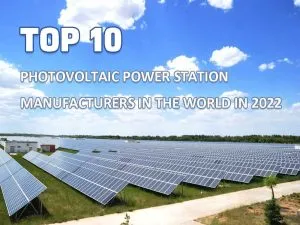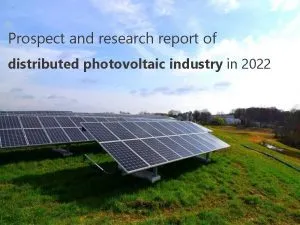How dc to ac converter works - definition and comparison
In recent years, with the booming development of the photovoltaic industry, the photovoltaic power generation system has received more and more attention. As we all know, the photovoltaic power generation system is composed of photovoltaic modules, dc to ac converter (inverter), brackets, cables and other parts.
They have a clear division of labor in the system and each undertakes different tasks. Photovoltaic modules are the most intuitive components that convert sunlight energy into direct current. The bracket plays the role of placing, installing and fixing the components. Cables are essential in power transmission systems.

Among them, the dc to ac converter also called as inverter, which can convert the direct current (dc) generated by photovoltaic modules into alternating current (ac), is the heart of the photovoltaic system and controls the production efficiency of photovoltaic power plants.
So how does dc to ac converter do? How well do different dc to ac converter convert? This article helps to understand the magical process of converting direct current to alternating current, and analyzes what is the main reason that affects the conversion efficiency of dc to ac converter?
What are direct current and alternating current?
The job of the dc to ac converter is to convert the direct current generated by the photovoltaic array into alternating current. First, we need to understand what is dc and ac?
Direct current (DC): The direction of the current and voltage of the direct current is the same, and the direction of the current is always the same. The dry batteries and lead acid batteries that we commonly use in our daily life use direct current.
Alternating current (AC): The direction and magnitude of the alternating current will change periodically over time. The household 220 V power supply used in life is alternating current.
From the difference between direct current and alternating current, we can find that direct current has great limitations in daily applications, for example, alternating current loads of household appliances cannot be powered by direct current power, and long-distance transportation will lose most of the power, etc. Therefore, in order for photovoltaic power generation to be widely used in our daily life, a dc to ac converter that can convert the direct current generated by it into alternating current is indispensable.
How is direct current converted to alternating current?
When the PV array transmits direct current power to the dc to ac converter, the direct current power quickly transfers energy back and forth through the dc to ac converter’s internal devices. In the process, the dc to ac converter forces the direct current to continuously change direction, producing a square wave alternating current. However, the square wave alternating current waveform is not smooth, and the voltage is constantly changing, which will seriously affect the life of the appliance.
Therefore, the dc to ac converter makes natural or regular width modulation of multiple pulses in each sine cycle by increasing the transmission speed and through sinusoidal pulse width modulation (SPWM). These pulses are sequentially modulated into a pulse train equivalent to a sine wave to form a sinusoidal current output. In this way, the square wave alternating current can be successfully transformed into a sinusoidal alternating current, and the purpose of converting direct current to alternating current is achieved.
The conversion efficiency of different dc to ac converter varies
It is worth mentioning that although dc to ac converter can convert direct current to alternating current, the conversion efficiency varies. In most cases, factors such as the power loss of the internal components of the dc to ac converter will affect the conversion efficiency of the dc to ac converter, resulting in changes in the power generation revenue of photovoltaic power plants. Taking a 500 kW dc to ac converter as an example, under the same power, if a high-quality dc to ac converter has a conversion efficiency that is 1% higher than that of an ordinary dc to ac converter, it is calculated based on 4 hours of work per day.
A high-quality dc to ac converter can generate nearly 20 kWh more electricity every day. Then, nearly 7,300 kWh of electricity can be generated in one year, and 73,000 kWh of electricity can be generated in ten years. This greatly improves the power generation revenue of users. How to choose high conversion rate products among many dc to ac converters to maximize the production capacity of photovoltaic power plants? In recent years, microinverters have attracted much attention due to their high efficiency.
Take HOYMILES’ dc to ac converter (micro-inverter) as an example. In terms of conversion efficiency, the HOYMILES micro-inverter system adopts a fully parallel circuit design, which can convert the direct current power of each component into alternating current power and then merge it into the grid, minimizing the energy lost during the inversion process. On the other hand, HOYMILES micro-inverter module-level MPPT technology will track the maximum power point of each PV module separately.
This means that if a PV module is not operating efficiently, it will not affect other PV modules. For example, in the entire photovoltaic system, a module is blocked by 50% of the sunlight. At this time, the MPPT controller of other modules will continue to maintain their respective maximum production efficiency. In order to test the performance of the MPPT controller of HOYMILES one-to-four series of micro-inverters under real conditions, the staff conducted field experiments to understand its operation in cloudy weather and when the light intensity changed greatly.
The red line reflects the actual maximum power of the PV module throughout the day, and the blue line reflects the maximum power point predicted by the MPPT controller. Because the HOYMILES one-to-four series micro-inverter accurately predicts the maximum power point, the blue line and the red line completely overlap. In addition, our website has also sorted out different pv inverter companies in Chian, which can compare the similarities and differences in their dc to ac converter technology and development.
Conclusion
The working principle and conversion efficiency of the dc to ac converter? Before choosing an inverter, we need to understand its performance and solutions in advance, so that we can better choose an efficient, safe and intelligent dc to ac converter to make the photovoltaic power station more efficient.


























